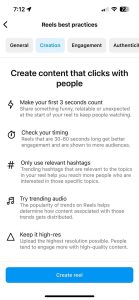Introduction
As the digital landscape evolves, the imminent phase-out of third-party cookies by 2024 marks a pivotal shift in digital advertising. This change necessitates a strategic adaptation for marketers to maintain effective customer engagement. The reliance on third-party cookies, once a cornerstone of digital advertising, has faced increasing scrutiny due to privacy concerns. This blog delves into the implications of this transition, explores the benefits of first-party data, and underscores the pivotal role of Customer Data Platforms (CDPs) in a privacy-first world.
The Demise of Third-Party Cookies
Privacy-Driven Changes by Major Browsers
Apple
Apple’s commitment to user privacy began with the iOS 14 update, which required explicit user consent for tracking. The iOS 17 update further enhances privacy features with mail privacy protection, safety checks, and updated passkeys.
Google
Google’s Chrome browser, holding approximately 60% of the global market share, will phase out third-party cookies by 2024. Instead, Google’s Privacy Sandbox initiative will introduce privacy-preserving APIs to protect user privacy while enabling digital businesses to thrive.
Mozilla
Mozilla introduced Total Cookie Protection in 2020 and recently launched Mozilla Monitor Plus, a privacy monitoring service that helps users manage their data across various platforms.
Impact on Key Stakeholders
Publishers
Media companies and tech giants like Google, Amazon, and Meta will be significantly affected. Forward-thinking publishers are shifting towards first-party data collection to sustain their revenue streams. According to Digiday, 78% of publishers believe that removing third-party cookies will enhance the value of their audience data.
Tech Giants
Google, Facebook, and Amazon have built robust first-party data ecosystems, positioning them well to weather the impact of losing third-party cookies. These tech giants leverage their vast user bases to gather first-party data, ensuring continued advertising effectiveness.
Advertisers
Advertisers must overhaul their strategies, focusing on first-party data to enhance transparency and control. The fragmented and non-transparent programmatic ad supply chain has resulted in significant inefficiencies. Moving towards first-party data collection will improve campaign performance and user trust.
Ad Tech Players
Ad Tech players like The Trade Desk are developing initiatives such as Unified ID 2.0 to replace cookie-based identifiers and maintain advertising attribution without third-party cookies.
Understanding Data Types
First-Party Data
Collected directly from users, first-party data is highly valuable and accurate. It reflects actual customer behavior and is gathered with user consent.
Second-Party Data
Shared between non-competitive partners, second-party data is less accurate than first-party data but still useful for marketing purposes.
Third-Party Data
Collected and sold by data brokers, third-party data is often unreliable and ethically questionable. Its availability to anyone diminishes its value.
Zero-Party Data
Voluntarily shared by customers, zero-party data is highly accurate and reliable, especially when combined with first-party data insights.
Transitioning from DMPs to CDPs
Data Management Platforms (DMPs)
DMPs manage anonymous cookie IDs and create audience segments using third-party data. However, the phasing out of third-party cookies will limit their effectiveness.
Customer Data Platforms (CDPs)
CDPs collect and organize first-party data, providing a comprehensive and consented view of customers. This shift allows brands to deliver personalized experiences without relying on third-party cookies.
Benefits of First-Party Data
Improved Accuracy
First-party data offers superior accuracy as it directly reflects customer interactions with a brand. A study by Google and Boston Consulting Group found that brands using first-party data achieve a 2.9x revenue lift and a 1.5x increase in cost savings.
Enhanced ROAS
First-party data enables highly personalized customer experiences, improving return on ad spend (ROAS). By leveraging this data, businesses can create more efficient lookalike targeting and retargeting campaigns.
Comprehensive Customer View
CDPs provide a holistic view of customer activity across channels, enhancing data quality and optimizing marketing spend. This comprehensive view helps brands understand user journeys and improve advertising performance.
Why CDPs Are Essential in a Privacy-First World
CDPs are crucial for businesses to comply with privacy regulations like CCPA and GDPR. They enable effective data management, including data deletion and suppression, ensuring adherence to regional privacy laws. CDPs also provide real-time customer profiles for personalized marketing, enhancing customer trust and loyalty.
Preparing for a Cookieless Future in Canada and the US
The Canadian and US Landscape
The impending phase-out of third-party cookies presents unique challenges and opportunities for advertisers in Canada and the US. Both regions have significant digital advertising markets and a strong focus on user privacy, making the transition to first-party data and CDPs essential for staying competitive.
Adapting to Privacy Regulations
In the US, privacy regulations like the California Consumer Privacy Act (CCPA) set the stage for a nationwide emphasis on user privacy. Advertisers must ensure compliance with these regulations by adopting CDPs that facilitate data management and user consent.
In Canada, the Personal Information Protection and Electronic Documents Act (PIPEDA) governs data privacy. Canadian businesses must prioritize first-party data collection and management to meet these regulatory requirements and maintain customer trust.
Leveraging First-Party Data
Advertisers in both countries should focus on building robust first-party data strategies. This involves collecting data directly from users through transparent and ethical means. By fostering trust and providing value in exchange for data, businesses can enhance customer relationships and gain a competitive edge.
Implementing CDPs
CDPs play a pivotal role in this transition by providing a centralized platform for managing and activating first-party data. Canadian and US businesses should invest in CDPs to unify customer data, improve personalization, and ensure compliance with privacy regulations.
Building a Privacy-First Culture
Creating a privacy-first culture within organizations is crucial. This involves educating employees about data privacy best practices, implementing robust data protection measures, and regularly reviewing and updating privacy policies. A privacy-first approach not only ensures compliance but also builds customer trust and loyalty.
Conclusion
The end of third-party cookies marks a transformative moment in digital advertising. Businesses must pivot to first-party data and CDPs to maintain effective customer engagement and comply with privacy regulations. By embracing these changes, brands can build stronger customer relationships, enhance marketing performance, and secure a competitive advantage in a privacy-first world. Twilio Segment has released a full downloadable guide – check it out here.
Make sure you’re ready for this transition and contact Amber 90 to prepare for what’s next!













